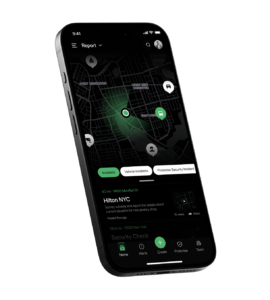In the world of executive protection, success doesn’t happen by chance—it’s engineered through meticulous planning, strategic foresight, and operational discipline. At the core of this preparation is one of the most underrated yet mission-critical tools in your arsenal: the advance work checklist.
For agents operating in high-stakes environments, the executive protection advance work checklist is more than just a planning tool—it’s a roadmap for reducing risk, building operational clarity, and enabling consistent mission performance.
This article breaks down what an effective advance work checklist includes, why it’s essential for EP professionals, and how to integrate it with modern tech like the AdvanceWork app for real-time operational excellence.
Why Checklists Matter in Executive Protection
In executive protection, checklists serve the same function they do in aviation, medicine, and military operations: standardizing excellence under pressure.
A well-structured advance work checklist ensures that:
- No detail is overlooked
- Mission planning follows a repeatable process
- Contingencies are anticipated before deployment
- Team roles and communications are aligned
- Lessons learned are captured for continuous improvement
In a world where a missed entry point, unmapped exit, or unverified staff member can create critical vulnerabilities, checklists offer a buffer against human error.
What Is an Advance Work Checklist?
An advance work checklist in executive protection is a detailed guide used by advance teams and detail leaders to plan, document, and execute all key components of a protective mission. It functions as both a task tracker and a situational audit tool, helping teams align on priorities, timelines, and contingencies.
Whether it’s a site recce, venue security survey, route planning, or emergency response mapping, the checklist ensures that all relevant security domains are covered before the principal arrives.
Core Areas Covered by a Professional EP Advance Checklist
A strong advance work checklist is typically broken down into functional domains, with each domain consisting of itemized tasks, observations, or confirmations. Below is a deep-dive into what professional teams include.
1. Mission Overview and Threat Landscape
- Principal profile and known threats
- Media exposure and public sentiment
- Political/social/environmental climate
- Briefing with risk intelligence analyst
- Local incident history (crime, terrorism, protests)
- Local contacts, embassy/consulate liaison
This section grounds the team in the overall context of the assignment and informs the security posture for the remainder of the plan.
2. Venue Survey Checklist
- Walkthrough of all scheduled venues
- Mapping of primary and alternate entry/exit points
- Physical layout and blueprints uploaded
- CCTV coverage assessment
- Private holding/waiting room options
- Venue security staff credentials and access control
- ID checks for all on-site personnel
- Choke point and blind spot analysis
- Venue emergency exit and shelter-in-place options
- Secure comms testing at venue
3. Route Planning Checklist
- Primary, secondary, and emergency routes driven
- Travel times calculated at mission-critical hours
- Choke point and ambush vulnerability markers
- Real-time GPS tools integrated (if applicable)
- Road construction or closure alerts
- Law enforcement escort availability
- Advance vehicle and pilot car deployment
- Fuel stops or recovery options
- Arrival and departure staging areas
- Traffic camera surveillance review
4. Accommodation and Lodging Assessment
- Floor plan of suite/floor obtained
- Elevator access control and stairwell mapping
- Location of fire exits and emergency equipment
- Staff access restrictions confirmed
- Rooms cleared prior to principal’s arrival
- 24/7 contact with hotel management or EP liaison
- Safe room designation (if needed)
- Perimeter surveillance of hotel grounds
5. Communication and Tech Systems
- Radio frequency assignments and testing
- Backup communication plan (e.g., mobile app, satellite phone)
- Primary contact list for all team roles
- Communication tree for emergencies
- Secure data-sharing platform established (e.g., AdvanceWork)
- Command post setup and function tested
- Shared documentation access across team
- Encryption protocols verified for all comms
6. Medical & Emergency Readiness
- Nearest Level 1 trauma centers identified and routed
- Ambulance services on standby or pre-notified
- On-team medical capabilities (EMT, trauma kit)
- Access plan for emergency response (EMS/law enforcement)
- Family notification procedures scripted
- Principal’s medical file securely available
- Rally points for team or evac rehearsed
7. Team Coordination and Roles
- Agent-in-charge and shift lead confirmed
- Designated communicator for internal and external updates
- Advance team assignments finalized
- Coverage of all key roles: follow car, limo driver, rear guard, medic, etc.
- Daily briefing cadence established
- Contingency drill scheduled (if multi-day event)
8. Event-Specific Factors (if applicable)
- Credential checks for guests or attendees
- Schedule of public appearances
- Press pen or media staging area surveyed
- VIP area and crowd barrier plan
- Vehicle load/unload plan rehearsed
- Principal security envelope set (inner and outer perimeter)
9. Post-Mission Debrief Items
- Advance checklist completion verified
- Team feedback collected
- Notable deviations or unexpected incidents logged
- Venue or route issues flagged for future missions
- Principal’s feedback recorded
- All materials uploaded to secure archive (e.g., AdvanceWork)
Modernizing the Advance Work Checklist with AdvanceWork
While paper checklists still have their place, digital platforms now allow EP teams to standardize, scale, and secure the advance planning process. The AdvanceWork app is built specifically for EP operations and provides the digital backbone for checklist-driven missions. Using the app will help you avoid the common mistakes made in advance work and ensure proper task completion.
Key Benefits of Using AdvanceWork:
✅ Real-time team tasking and status tracking
Assign, monitor, and complete checklist items in real-time with instant updates for all users.
✅ Encrypted document and photo storage
Upload venue maps, ID verifications, threat briefs, and mission SOPs securely.
✅ Mission templates for repeatable operations
Create checklist templates once and replicate them across teams and future assignments.
✅ Offline capability for disconnected environments
Operate seamlessly even in low- or no-signal locations, then sync when reconnected.
✅ Centralized command visibility
Keep your command post or HQ in the loop with synchronized updates and mission logs.
Whether you’re planning a high-visibility keynote or a low-profile executive site visit, AdvanceWork ensures your advance work checklist in executive protection is complete, dynamic, and accessible to those who need it.
Real-World Scenario: EP Summit Deployment
A protective detail is deployed to a major economic summit where their principal will attend multiple private and public events. The advance work checklist helped ensure:
- All venues were walked and documented in AdvanceWork
- Police and private security liaisons were logged and briefed
- Medical centers and extraction routes were confirmed
- Multiple contingencies were rehearsed and assigned
- Roles and shifts were distributed digitally with status tracking
When an unplanned protest caused a traffic lockdown on Day 2, the advance team activated an alternate route that had been scouted, timed, and briefed in advance—allowing the detail to reroute safely without compromising the principal’s schedule.
Avoiding Common Checklist Pitfalls
Even the best checklist can fail if it’s not used correctly. Here are some mistakes to avoid:
- “Check-the-box” mindset – Treating it as a formality instead of a tool for thorough preparation
- Lack of updates – Failing to revise the checklist based on local intel or evolving threats
- Team silos – Not sharing updates across the detail or command post
- Outdated platforms – Using static or insecure tools for a dynamic, mission-critical process
When used dynamically and shared in real time, your checklist becomes an extension of your command structure—not just a to-do list.
Final Thoughts: Discipline Drives Success
A comprehensive advance work checklist in executive protection is not a luxury—it’s a necessity. It ensures nothing slips through the cracks, allows for rapid delegation, and gives your team the clarity needed to protect, adapt, and respond.
By pairing a professional checklist with smart tools like the AdvanceWork app, your protective detail becomes more efficient, more informed, and more resilient. In an environment where small mistakes can create massive consequences, checklists are your first line of proactive defense.
Are your checklists mission-ready?
Get in touch with the AdvanceWork team today and empower your operation with digital precision and operational confidence.



